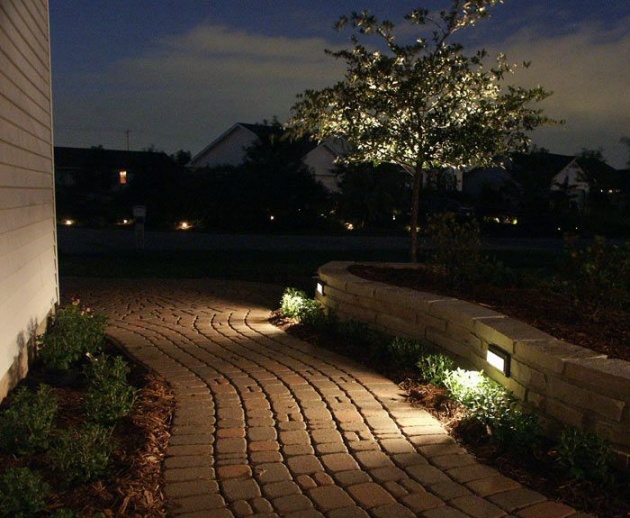Whether for security reasons or as a way to accentuate garden spaces and features, outdoor lighting has come to be one of the most popular trends among homeowners. And thanks to new technologies, it now allows for a lot more versatile designs than the traditional lamppost on the front porch.
With the right type of lighting fixtures, you can add depth and dimension to your garden, as well as complement your property's architecture by strategically placing solar, LED or electrical lights along pathways, on patios, gazebos, and around the focal points of your landscape, such as trees, plants, and water features. A well-lit outdoor space is useful year-round as it lets you enjoy more time outside in the summer for al fresco dining and entertaining, and it's also a necessity in winter when short days don't let you do much in the garden.
With new low-voltage systems, you have budget-friendly and easy to install solutions for outdoor lighting. They are the long-waited alternative to line voltage systems which were once a privilege reserved to commercial properties and large estates. Now, every homeowner can have a bespoke lighting design installed in a day, which in the long run will also prove to be energy-efficient, as low-voltage lights use one-third the energy of a 120-volt security lighting system and allow for flexibility during installation and future adjustment.
Low-Voltage Lights

What makes low-voltage lights so popular is their relatively low cost for installation and the fact that they can be included in the landscape at any stage. You can add and adjust them in time as your landscape changes, for example if you choose to shift beds or as the trees grow. Unlike the old line voltage light systems, installing low-voltage lights requires only 15-cm-deep channels. This depth is safe for lawn mowing, while at the same time flexible for shifting. Low voltage fixtures usually operate with LED lights, which have great precision in controlling the light beam, directing the light where it is needed instead of wasting it in all directions. Using much less electricity than the 120-volt lighting fixtures, low-voltage lights save you the hassle of changing bulbs for years on end.
Path Lights

Driveways and pathways are key areas to illuminate mainly for safety reasons. There are many styles of path lighting to choose from. Path lights that line the walkway are the most popular option but you have to be careful not to place them too close together, as this can create a runway effect. There are LED and solar models of path lights, and as for the style – you can choose among pagodas, lanterns, lamps, or posts that will best complement your landscape. Recessed or paver lights are installed in the edges of the walkway paving. There are artificial stone lighting kits with LED lights and solar powered paver lights, which make outdoor lighting installation really easy. If you want to make a focal point, you can install piers, pillars and bollards. Be careful, though, that the lights aren't too bright, creating a glare and shining into visitors' eyes. Subtlety is essential in pathway lighting.
Accent Lighting

When planning a lighting design to accentuate certain features of your landscape, keep in mind that sometimes less is more. You don't need many lights or clusters of bulbs to make a statement. Choose your focal points and work with them. Low-voltage fixtures can create a moonlighting effect when installed in the turf under a tree. Or you can achieve a relaxing shimmering effect by shining a light down from a tree into a swimming pool.
Security Lighting

Lights are not only used to beautify your garden. They are also installed for security reasons. A well-lit landscape is more likely to deter potential intruders and burglars but there are some things you need to consider. It is a good idea to light up places that can be seen from neighbours and use a switch control from the inside of your home for areas out of sight. Analogue or digital timers that will automatically turn on and off lights at a time set by you or a photocell can make things even easier. Motion-sensor floodlights are intended for a “”scare-away” effect but they can also be counter-productive. If the light is too bright, it creates instant blinding glare and deep shadows where intruders can hide. Instead, lighting of lower intensity will illuminate selected large areas of your property and will let you keep an eye on your garden without causing night-blindness.



